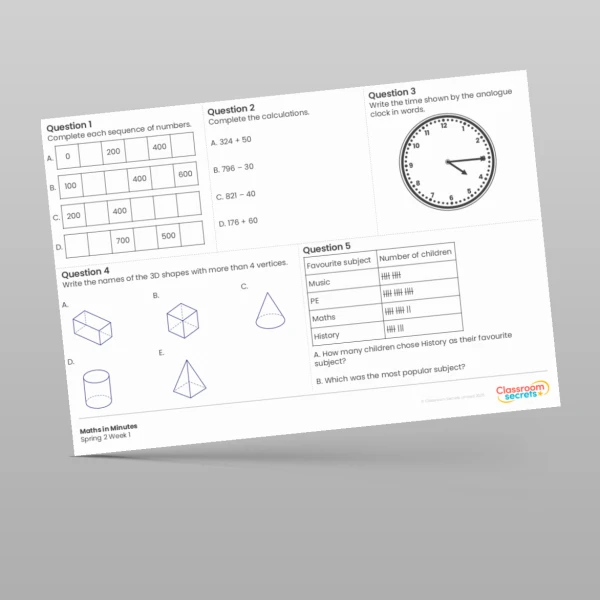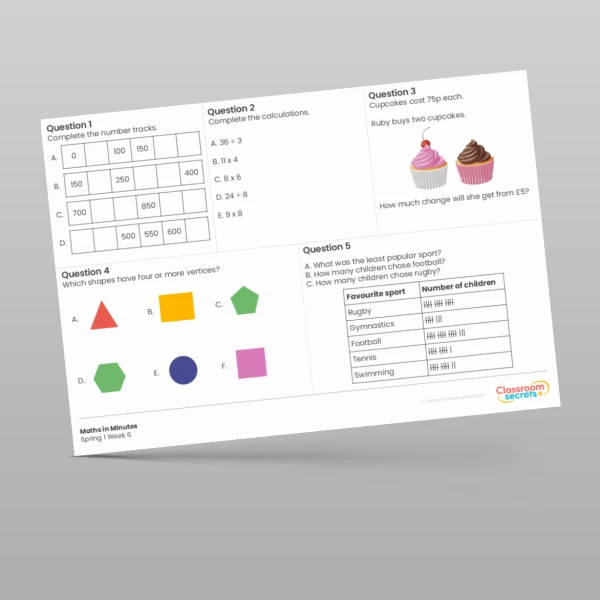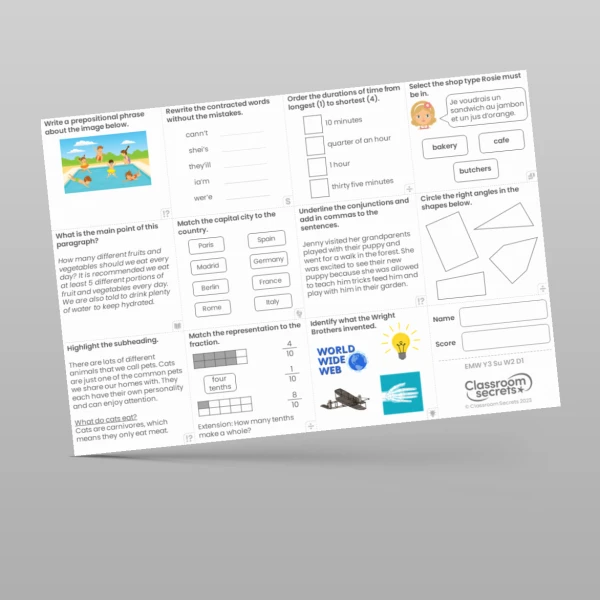

Boost children's confidence and ensure they are secure with previously taught objectives with this Year 3 Maths in Minutes resource. There are three sets of questions which cover a range of skills including number, measure, geometry and statistics. To save on printing costs we've specially designed this resource to be displayed on the interactive whiteboard. It's perfect for morning work, as a warm-up at the start of a maths lesson or whenever you have some time to fill. Download now!
Curriculum Objectives
- Compare and order lengths, mass, volume/capacity and record the results using >, < and =
- Compare and sequence intervals of time
- Identify and describe the properties of 2-D shapes, including the number of sides and line symmetry in a vertical line
- Identify and describe the properties of 3-D shapes, including the number of edges, vertices and faces
- Use mathematical vocabulary to describe position, direction and movement, including movement in a straight line and distinguishing between rotation as a turn and in terms of right angles for quarter, half and three-quarter turns (clockwise and anticlockwise)
- Interpret and construct simple pictograms, tally charts, block diagrams and simple tables
- Ask and answer simple questions by counting the number of objects in each category and sorting the categories by quantity
- Ask and answer questions about totalling and comparing categorical data
- Compare and order numbers up to 1000 / Read and write numbers up to 1000 in numerals and in words
- Find 10 or 100 more or less than a given number
- Add and subtract numbers mentally, including: three-digit number and ones; three-digit number and tens; three-digit number and hundreds
- Solve problems, including missing number problems, using number facts, place value, and more complex addition and subtraction
- Recall and use multiplication and division facts for the 3, 4 and 8 multiplication tables
- Recognise, find and write fractions of a discrete set of objects: unit fractions and non-unit fractions with small denominators
- Add and subtract amounts of money to give change, using both £ and p in practical contexts
Tags
Spring
2M1
2M4b
2G2a
2G2b
2P2
2S1
2S2a
2S2b
3N2a
3N2b
3C1
3C4
3C6
3F1b
3M9a
Maths in Minutes











